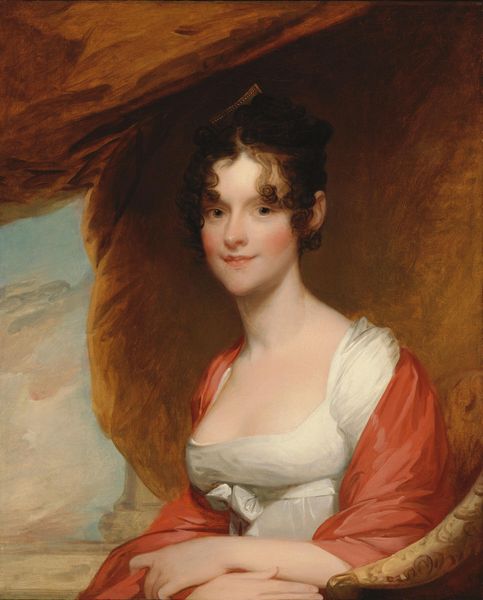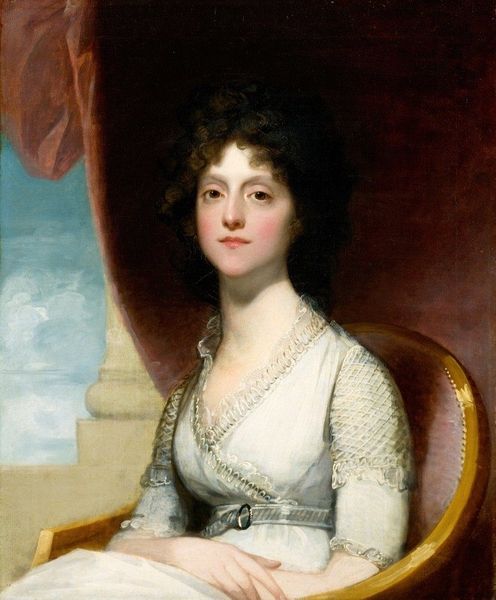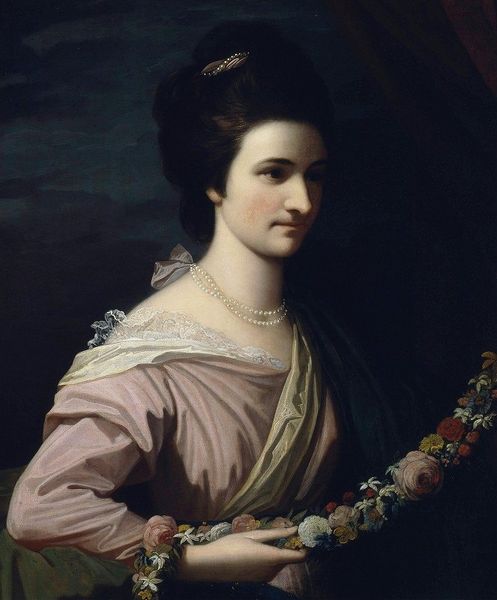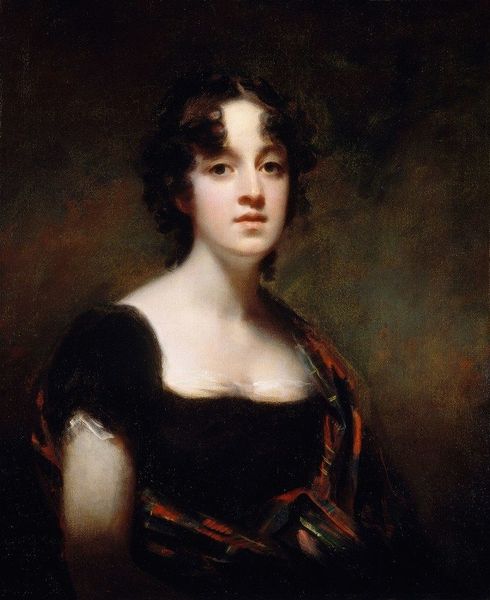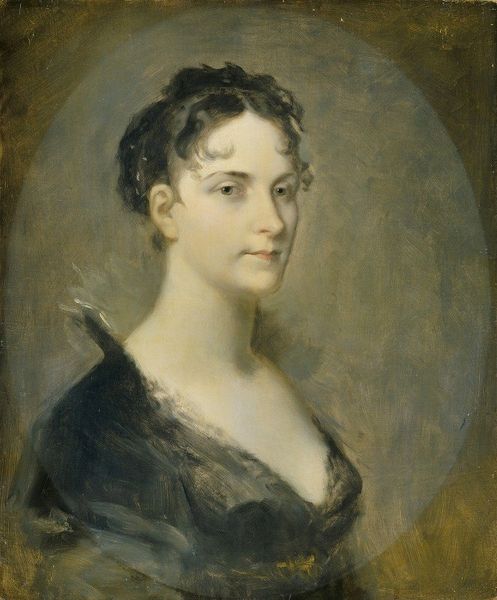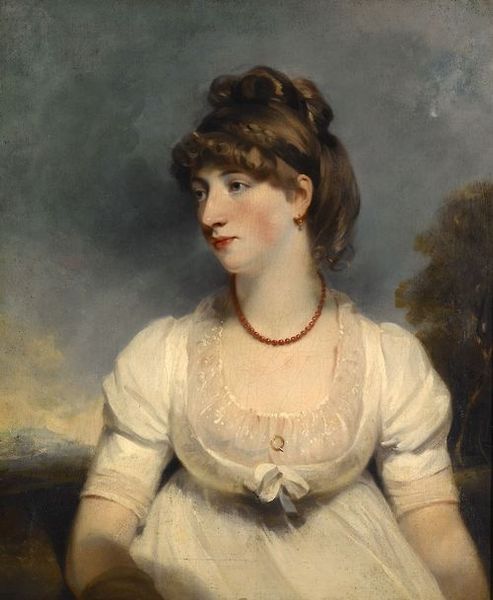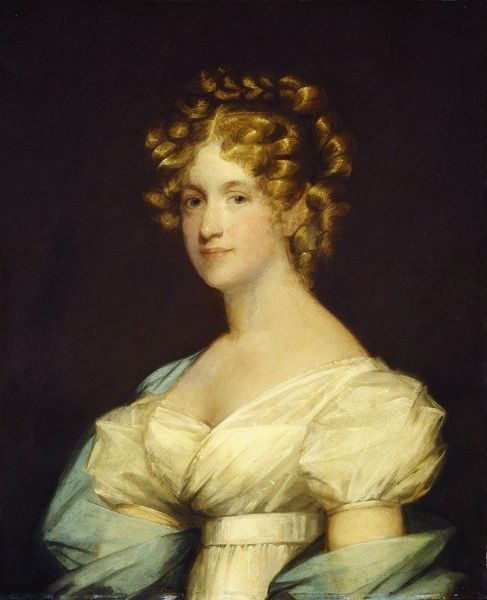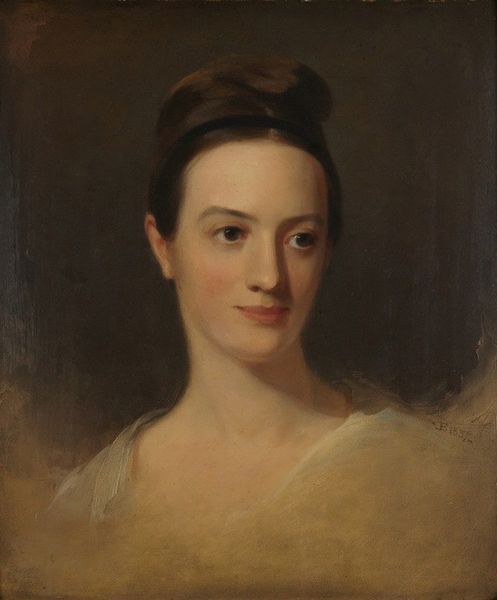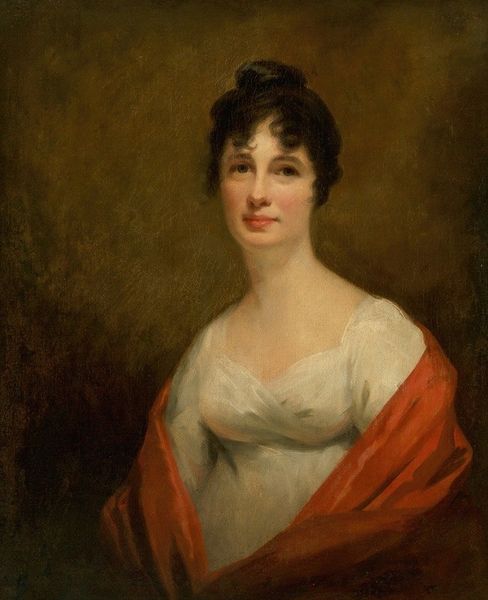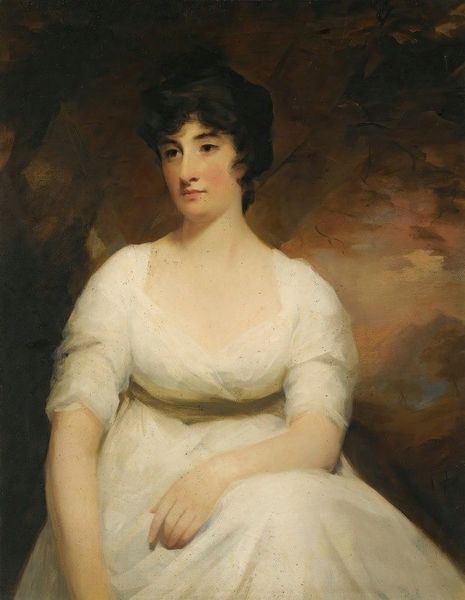
painting, oil-paint
#
portrait
#
figurative
#
painting
#
oil-paint
#
romanticism
#
history-painting
#
realism
Copyright: Public Domain: Artvee
Curator: Henry Raeburn painted this portrait of Mrs. James Wedderburn, née Isabelle Clerk, sometime between 1819 and 1820. It's a striking example of his portraiture work from that period. Editor: She seems pensive. The muted colors, that soft, indirect light... it all contributes to a sense of quiet contemplation, doesn't it? Curator: Absolutely. Raeburn was known for capturing a sense of the sitter's character and social standing. Look at the details in her dress and jewelry; they speak volumes about her status within Edinburgh society at the time. Her attire is indicative of her elevated social position. Editor: The almost minimalist background puts the full focus on her, though. What do you read from that stark backdrop in terms of the power dynamics at play when wealthy women sat to have their portraits painted in this period? Curator: Interesting. In many ways, Raeburn simplified the genre. The backgrounds of his portraits rarely feature elaborate settings, and his focus was instead on the face of the figure and on the material of the costume. What's crucial is the emphasis on presenting a vision of feminine virtue aligned with the values upheld by Scotland’s powerful merchant class. Editor: But her gaze isn’t directly at the viewer. Is this demure quality also an example of constructing a kind of submissive femininity? Curator: Certainly. Contemporary interpretations of femininity are layered within the artist's aesthetic vision. He catered to what his upper class clients wished to communicate about themselves and their wives. We can unpack it as a social construct rooted in how the wealthy of this historical moment wanted to portray themselves and their families. Editor: And by understanding those constructed displays, we reveal how norms are produced, enforced and sometimes challenged, even within seemingly conventional artwork like this. Thanks for offering your perspective. Curator: My pleasure, it’s wonderful to consider what this piece tells us about societal pressures and the controlled images of women then and, indeed, still now.
Comments
No comments
Be the first to comment and join the conversation on the ultimate creative platform.
